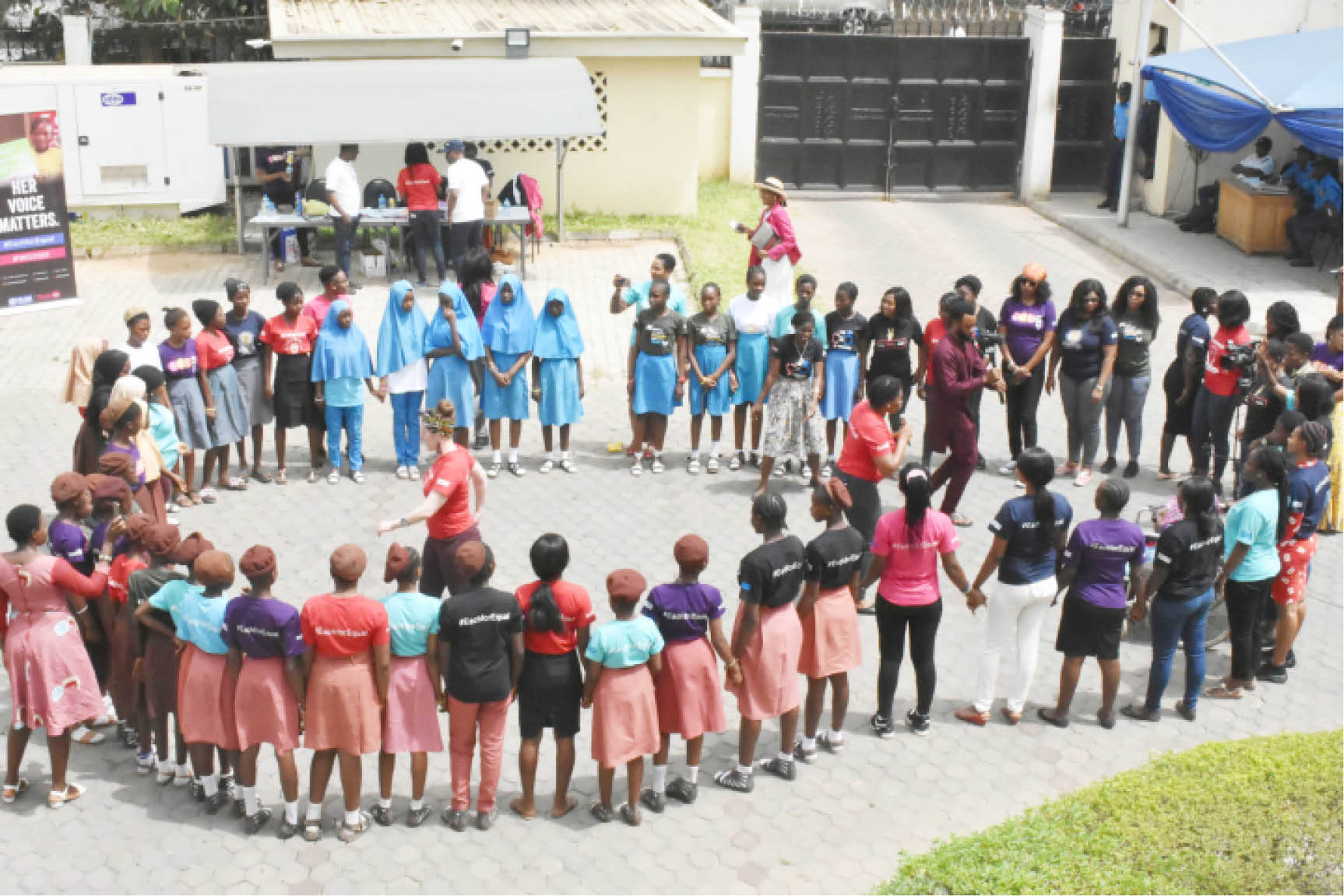Women take campaign on girl-child education to Zamfara rural communities
Despite the security challenges rocking several communities in Zamfara State, a women’s group has undertaken a vigorous campaign to sensitise rural communities on the importance of girl-child education. Operating under the auspices of High-Level Women Advocates (HILWA), the women have visited numerous hard- to-reach rural communities with a view to identifying challenges hindering rural families […]

Khadijat is among dozens of girls starting out on a path to apply technology to what matters to them
Despite the security challenges rocking several communities in Zamfara State, a women’s group has undertaken a vigorous campaign to sensitise rural communities on the importance of girl-child education.
Operating under the auspices of High-Level Women Advocates (HILWA), the women have visited numerous hard- to-reach rural communities with a view to identifying challenges hindering rural families from enrolling their girl children into schools.
- Purported rigging Memo didn’t emanate from me — Zamfara Dep Chief of Staff
- Troops rescue kidnapped girls in Zamfara, Katsina
The chairperson of the group in the state, Barrister Suwaiba Ibrahim Barau, said in the past there was only 21 percent of girl-child participation in the state’s primary schools, but according to her, the narrative is gradually changing as there was about 47 percent participation of girl child in the state currently.
“We are yet to reach the desired target but we are still hopeful that the 100 percent target would be achieved. This is what HILWA is aiming for and we are working hard to achieve it,” she said.
According to her, during their visits to the rural communities, they found that misconceptions, poverty, culture are among the factors hindering parents from enrolling and retaining the girls in primary and secondary schools until completion and transiting to higher institutions.
“Many families find it difficult to finance the education of their children. Purchase of books, uniforms and other learning materials is becoming increasingly difficult for them
“Apart from this, most parents in rural areas don’t understand the value of education. They feel that if a girl-child is educated she would lose those values attached to their culture,” Barrister Suwaiba said.
The chairperson added that awareness campaigns embarked upon by the HILWA has succeeded in enlightening the people on the importance of education.
She said: “We are making progress but our major challenge is that these areas are very hard to reach in terms of good access roads and there is also the issue of insecurity attached to it.”
Earlier, the National Chairperson of HILWA, Madam Azuka Menkiti said preliminary analysis of 2019/2012 annual school census figures show that 494, 453 school-age children are still out of school and 201, 596 (50.2%) are females.
“Transition rate from primary to secondary schools is very worrisome because out of a total of 358,079 estimated children that are supposed to be in Junior Secondary Schools, only 113,343 (32% ) are in schools,” she said.
She said low enrollment, attendance and transition rate of girls in education is an issue in Zamfara state adding that despite automatic admission into junior secondary schools, the transition rate remains low.
Governor Bello Muhammad Matawalle said his administration had made a significant improvement in girl-child enrollment through the State Universal Basic Education Board (SUBEB).
He added that his administration also encourages married women, widows and divorcees to further their education at the school for continuing education which he said has started to yield positive results in the state.
